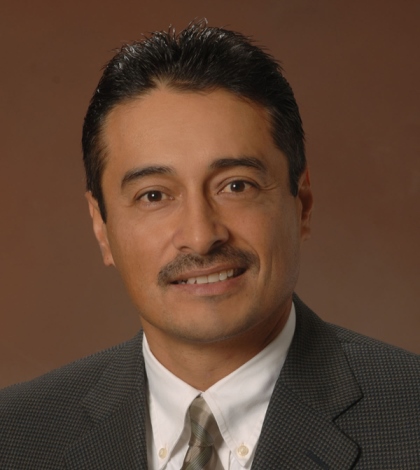Speaking to a crowd of more than 300 attendees at Friday’s San Bernardino County (SBC) Water Conference, Joel Ledesma, deputy director, State Water Project with the California Department of Water Resources (DWR), detailed the events leading up to February’s Oroville Dam disaster, the crisis itself and the some of the specifics surrounding the event. But the majority of his comments focused on the management of disaster, partnerships with other agencies and how the DWR (and other agencies) are looking to better plan for future disasters. Ledesma spoke from a position of authority and experience having served as an incident commander during the prolonged disaster.
Tremendous atmospheric rivers rolled across Northern California throughout Water Year 2016-17 after the state’s five-plus year drought. In early February, one of those intense storms stalled over the Oroville area and dam operators were unable to get water out of the dam fast enough. But it was the visual change in how water was pelting down the main spillway that caused dam operators to suspect a problem. On Feb. 7 dam personnel were able to visualize a gaping hole in the lower half of the spillway – some 150 feet long, 450 feet wide and 30 feet deep – that validated the core of the crisis not only for the DWR but also for the town of Oroville and the surrounding areas, a host of regulatory agencies and the state in general as rain continued to pound the region.
Ledesma shared that the problem was not just the broken spillway. The issue grew exponentially as secondary issues were identified. An electrical tower was in danger of toppling (which thankfully did not occur), water began backing up in the diversion pool threatening the Hyatt Power Plant triggering a flood fight for days on end, a downstream evacuation of homes and businesses displaced some 200,000 people and questions swirled as to the reliability of the emergency spillway. Luckily, the dam itself was not in jeopardy.
Ledesma praised crisis partner Cal Fire several times throughout his presentation. The state fire agency was called in to assist DWR and assume Incident Command leadership for the crisis early on; DWR realized Cal Fire had extensive experience in mobilizing quickly for large scale disasters. Ledesma noted, “They do this all the time.”
Ledesma also spoke to some of the behind the scenes management decisions that helped to avoid secondary issues during the Oroville crisis. “The simple things are what make managing chaos easier,” he said. For Ledesma personally that was a decision to send home two engineers after several days of very limited sleep – “Part of a leadership’s role is to ensure that the experts are rested enough to do the job.” It also meant seeing to it that food was available around the clock for personnel working long hours. And, in Ledesma’s case, it meant “Safety processes and procedures were embedded and in place!” He shared anecdotally that meant telling contracted geologists that they could not climb down into the main spillway’s gaping hole as the hole was not safe and probably unstable.
Moving forward Ledesma shared the four points tht now comprise the Response Path to Success and Emergency Preparedness for any future dam crises for DWR:
- A Unified Command (the rules must be understood)
- On-site DWR expertise and experience
- Adequate safety professionals and systems
- Strong relationships with local agencies.
Ledesma praised the local Butte County Sheriff and his team as well as the California Highway Patrol, the city of Oroville and its mayor/council and various other elected officials. He said, “You need both the people with incident command experience and people with site specific experience.”
The Oroville Dam crisis has triggered a national response for Dam Safety Efforts and Ledesma wrapped up his presentation sharing the five-point plan:
- The need to improve national infrastructures including dams
- The National Dam Rehabilitation Act
- Share information with the industry including forensic analyses
- The need for continued improvement and funding for all sate dam safety programs
- Improved technology to help dam safety organizations across the nation.
In summation, Ledesma noted: “DWR will take emergency preparedness differently now.”
 California Water News Daily Your Source For Water News in California
California Water News Daily Your Source For Water News in California


